Uncategorized
We’re proud to be a Los Angeles Green Business
Lawn to Landscape
- This corner lot in Pasadena was surrounded on two sides by turf grass and old shrubs.
- We worked with the homeowners and licensed contractors to remove the grass and amend the soil organically. Soil was also moved around, digging down to create small lakes (swales) and mounded up to create little hills (berms). Small rivers (trenches) connected gutter downspouts to the swales, so rainwater from the roof can stay in the garden and deep water the plants.
- Native and climate appropriate plants were planted throughout the garden.
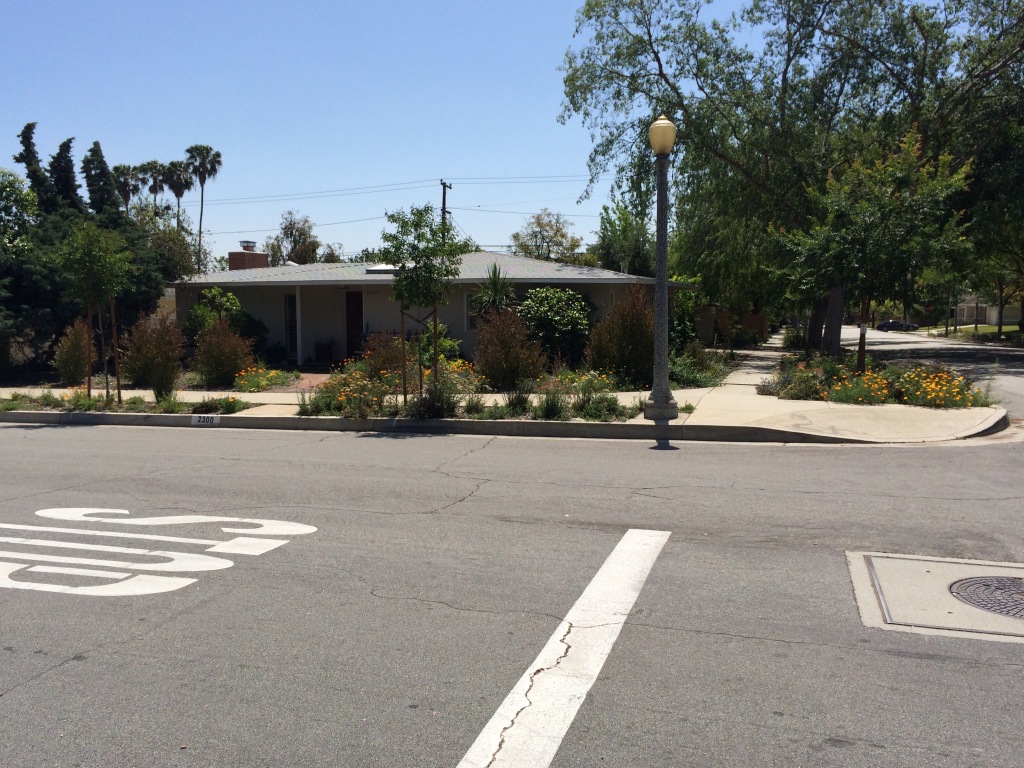


Los Angeles County Drought Tolerant Handbook
 We helped write the book on drought tolerant gardening in Los Angeles! (Download link at the bottom of this post.)
We helped write the book on drought tolerant gardening in Los Angeles! (Download link at the bottom of this post.)
DIY-friendly, this handy handbook can help you make your garden more resilient, less maintenance and resource intensive, and more beautiful all year. It includes sample garden designs, more than 500 drought tolerant plants specifically chosen for LA’s climate zones, and lot’s of Garden How-To info is included here.
Download the pdf at the County Green Building Program
How Much Water Are You Using?
Los Angeles is talking about water sources and water conservation. On average, Southern Californians use 50% – 70% of our water outside, in our gardens.
How much water are you using? Check your DWP bill. Look for “Water Charges” and you will see a date range and a number followed by HCF. This stands for Hundred Cubic Feet, and 1 HCF = 748 Gallons.
Multiply the HCF # by 748, then divide by the number of days in your billing period to determine how many gallons, on average, you use in a given day.
For example, my recent bill lists:
Water Charges 11/7/13 – 1/9/14 6 HCF
so 6 HCF divided by 63 days = 0.0953 HCF/day
0.0953 x 748 = 71.2 gallons / day
If you want to see how much water your irrigation system is using, consider checking your water meter the next time you run your system. Note the numbers both before and after, then just subtract to get your total. Or, if you’ve turned your irrigation system completely off during the winter storms, compare your January bill to one from October to see the difference.
Knowledge is power! With this information, you can target your own water conservation efforts. You may want to consider recycling some of your water (from your shower, water filtration system and/or washing machine) into your landscape as gray water. Check your downspouts and drain pipes, to see if they can be rerouted to swales or raingardens to harvest stormwater. Consider applying for a rebate and upgrading your old irrigation timer to a new smart app-based controller. Check your system regularly for leaks and proper programming. And talk to your gardener about how much water your garden really needs, and how often.
Curb Cuts
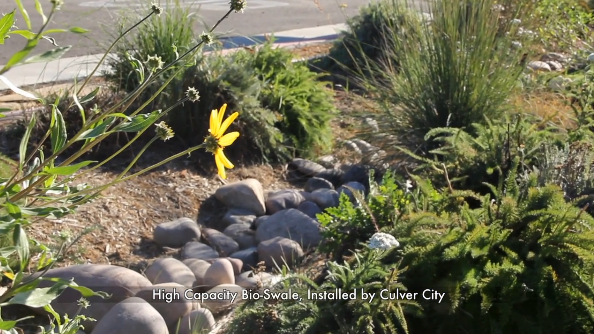
New parkway regulations were first presented to Culver City council in May 2013. Transition Culver City has a great video up that explains exactly why curb cutting is so cool! Check it out.
Los Angeles building code has focused on getting stormwater off properties, into streets, then storm drains to the river and the Ocean. This is starting to change, and while curb-cuts are not visible city-wide yet, they are starting to popup around the city.
Leave your Leaves

This New York Times article explains why it’s better to leave your fallen leaves instead of spending money to bag and remove them. Leaving the leaves (free & easy mulch!) feeds the soil, prevents evaporation and helps suppress weed germination and growth. In towns like Dobbs Ferry people are seeing signs around saying “Leave Leaves Alone!” and “Love ’Em and Leave ’Em.”
Water in LA (in Los Angeles Magazine)
Water in LA (in Los Angeles Magazine)
The September issue features a really great collection of articles about regional water, addressing issues including:
- where our water comes from
- historical and political issues
- what our future may hold
- and what we can do about it (#1 tip – water-smart landscaping!)
UCLA Takes Count
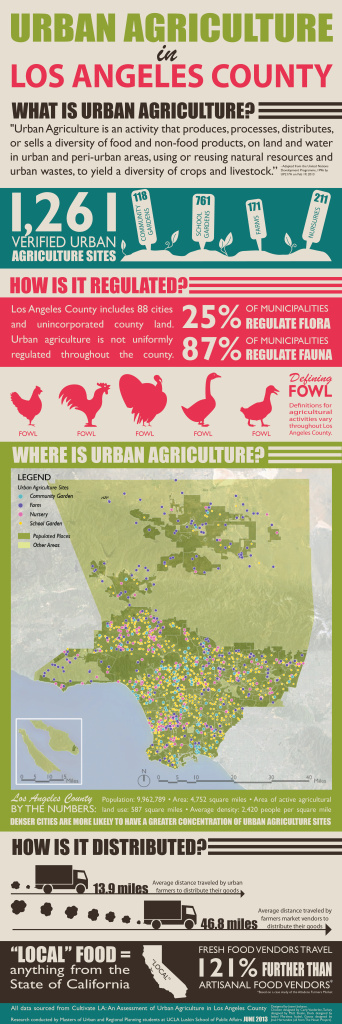
Until now there wasn’t a good resource for locating urban gardens in Los Angeles. Carol Goldstein oversaw this project at UCLA that can verify there are 1,261 urban agricultural sites here in sunny SoCal. This study did NOT count backyard farms or residential edible gardens. A fun INTERACTIVE MAP was created through this research. You can now check out verified agricultural gardens in your area. Including which schools have their own gardens.
City Council Greenlights Greens
Los Angeles City Council finally allows what local hero Ron Finley has been advocating for years. Now it is legal to plant vegetables and other edibles in parkway strips. Share with your neighbors, and keep your dogs off the lettuce.


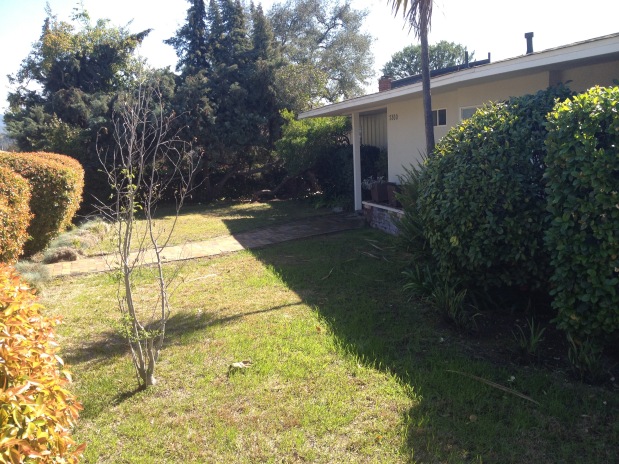


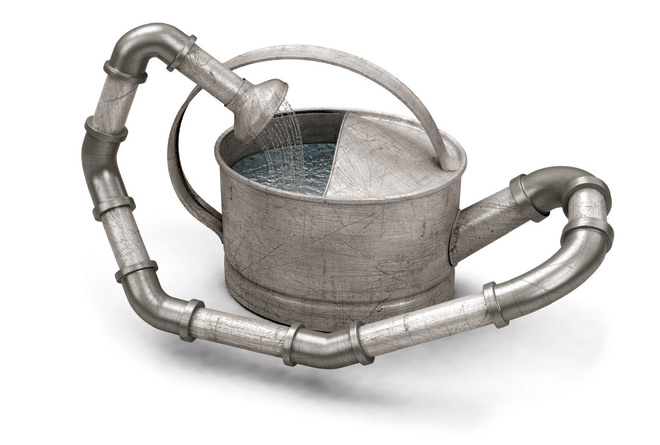

You must be logged in to post a comment.